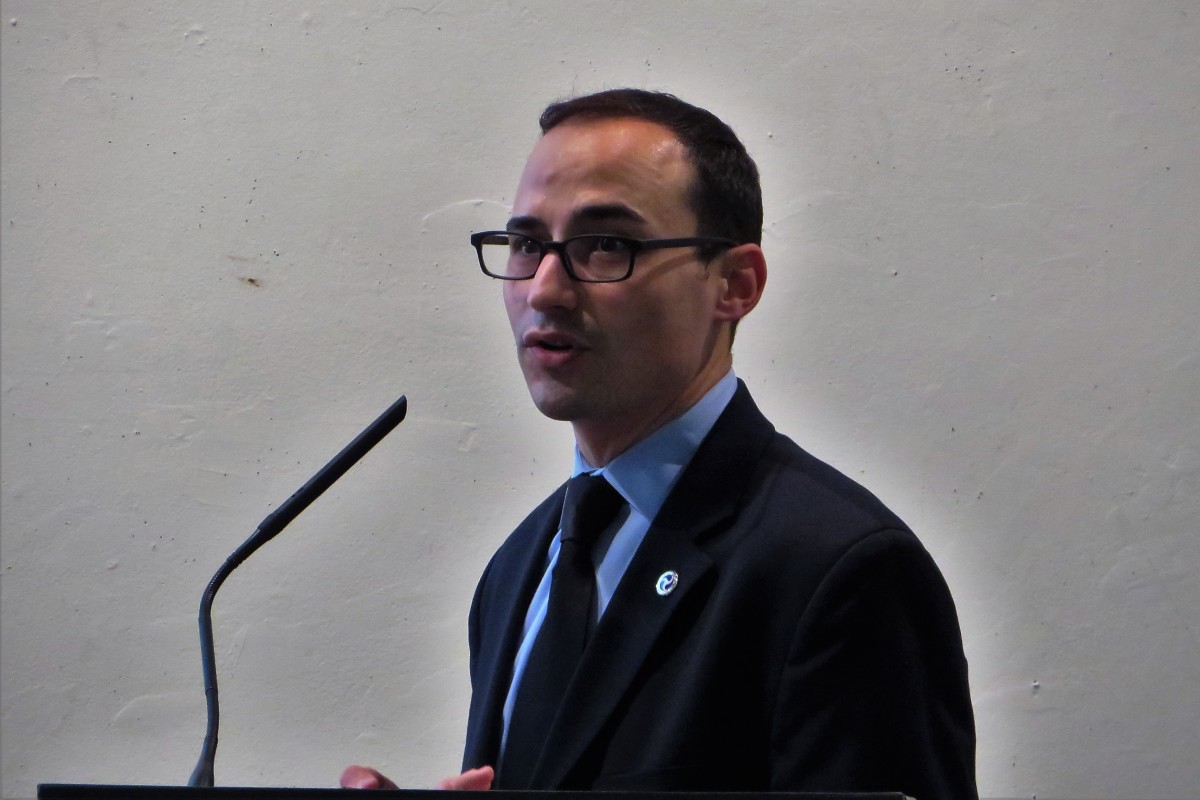An oncoming rush of self-driving cars is creating uncertainty for urban planners as they make infrastructure decisions for the future, according to a panel at the University of Pennsylvania.
“The pace of [autonomous vehicle] technology … is incredible,” said Daniel Lee, director of the General Robotics Automation, Sensing & Perception (GRASP) Lab at Penn Engineering. Lee joined two other Penn professors and an official from the U.S. Department of Transportation (DoT) in a discussion Wednesday on automation and the future of cities.
In just the last seven years, autonomous vehicle “technology has gone essentially from the research setting to now where our students have been recruited by the Googles, the Ubers, the Apples, the Teslas, the GMs, the Volkswagens — every single manufacturer now working this space,” said Lee.
At the end of the day it’s safer and more efficient, but we have to do it in a safe and deliberate way.
Urban planners see two potential scenarios for what widespread adoption of self-driving cars will do to traffic in cities, said Erick Guerra, assistant professor of city and regional planning at Penn Design.
One possibility is that autonomous vehicles will encourage more car sharing, and it will become less important for individuals to own their own cars, he said.
Indeed, Zipcar and other car-sharing companies around the world have announced interest in making self-driving cars available to customers.
However, Guerra said the opposite scenario is also possible: the ease of self-driving cars might encourage more people to buy cars, including those who cannot drive today due to age or other factors.
Also, today’s crowded parking could turn into tomorrow’s crowded streets, he said.
“Instead of paying for parking when you go to your favorite restaurant, why not just have your car go around in circles? Gas isn’t that expensive, anyway,” Guerra said.
It’s also not certain how many people will switch to self-driving cars for short-distance trips between cities, said Megan Ryerson, assistant professor of city and regional planning and electrical and systems engineering at Penn Design and Penn Engineering.
In a Penn survey of intercity travelers, most participants disagreed that they would change their mode of transportation for these kinds of trips to self-driving cars. However, younger people tended to be more excited about the possibility of autonomous vehicles, she said.
Until the future is more certain, the best course of action may be to “make investments or decisions that function well under a variety of scenarios,” said Guerra. “Think about it similar to something like climate change or disaster planning.”
The U.S. Department of Treasury sees many potential benefits coming from autonomous vehicles, said Vinn White, senior policy advisor in the Office of the Secretary of Transportation. A DoT report released in February, Beyond Traffic 2045, found that new technology including autonomous vehicles could potentially address 81 percent of crashes involving unimpaired drivers across the country. Self-driving cars could also improve efficiency on the roads, reduce pollution to the environment and narrow the equity and opportunity gap, he said.
However, he cautioned that the federal government won’t be able to change the direction of national infrastructure at the drop of a hat.
“You can’t just snap a finger and remove a bridge,” he said. “It’s going to be a tough ship to turn when it comes to planning.”
White said the government’s role will likely be as a regulator.
“We have to move at a fast pace in government to embrace this technology, because at the end of the day it’s safer and more efficient, but we have to do it in a safe and deliberate way,” he said.







